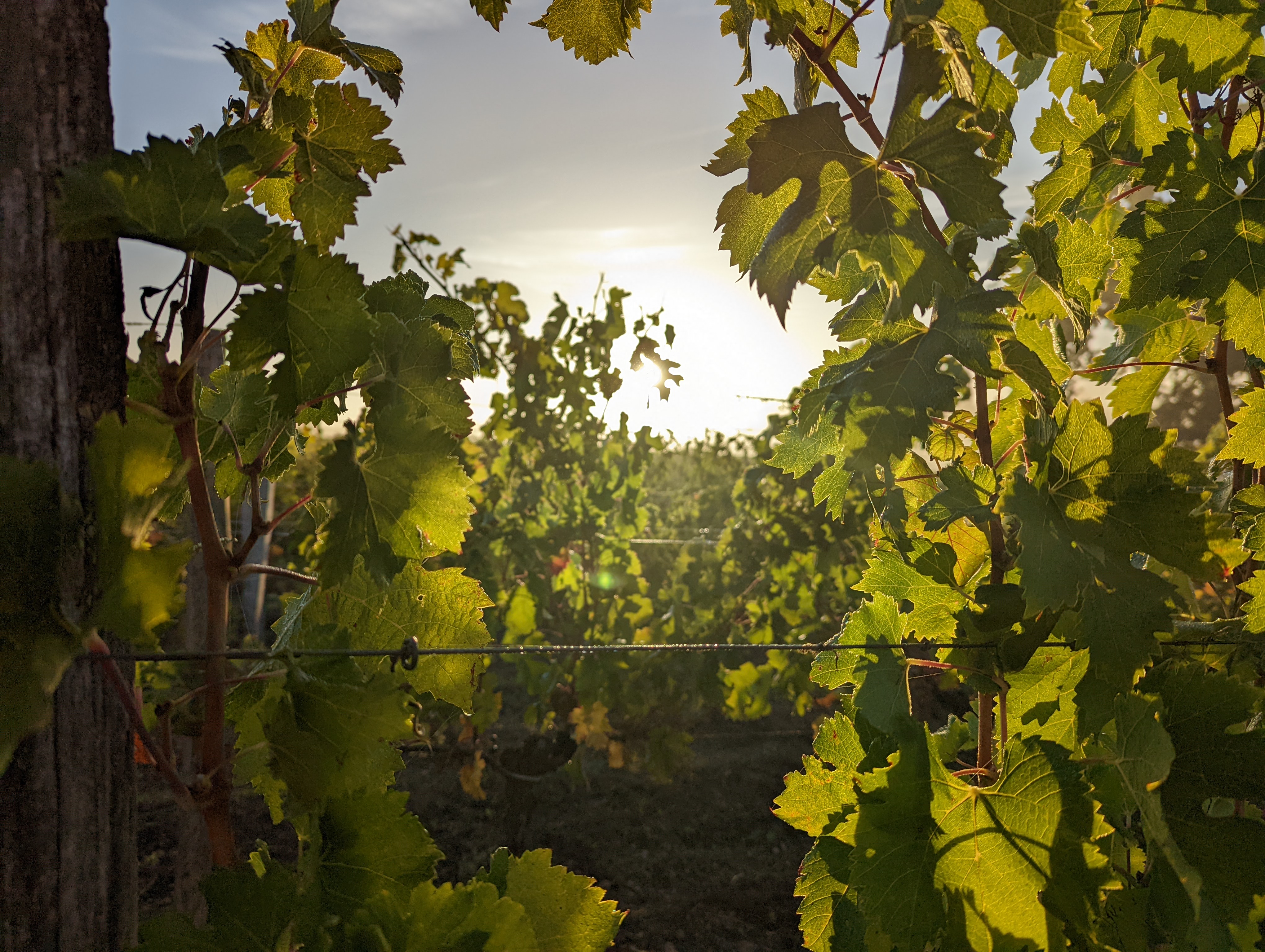Bordeaux grape varieties: their encounter with terroirs and age-old know-how.
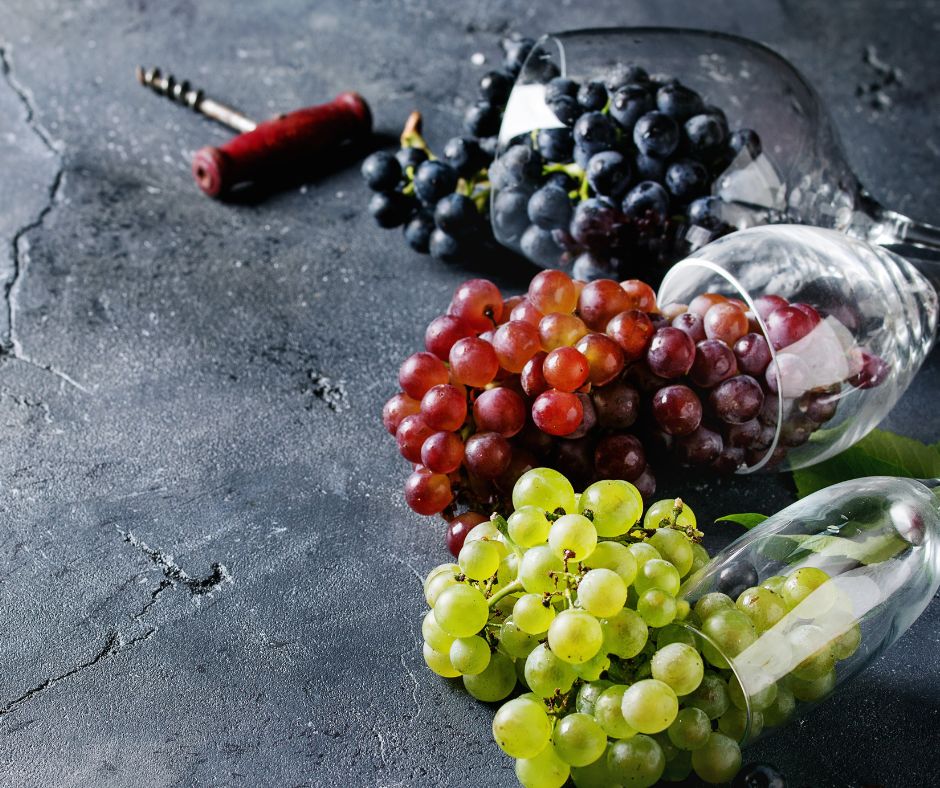
The Bordeaux wine region is one of the most prestigious and iconic in the world. It extends on both banks of the Gironde, and between its two tributaries, the Dordogne and the Garonne, to the south of Bordeaux. The mere mention of Bordeaux wines is sure to make oenophiles' eyes shine. This reputation is the fruit of ancestral know-how perpetuated by several generations of passionate winemakers who have succeeded in sublimating their rich terroirs. Wine lovers will find that Bordeaux is France's leading region for Appellation d'Origine Contrôlée wines. This taste identity is due to the grape varieties found throughout the Bordeaux vineyards, to the different terroirs and to the blending skills of the winegrowers. Here's a closer look at the key grape varieties that go into blending Bordeaux wines and have contributed to their reputation.
Appellations for Bordeaux grape varieties
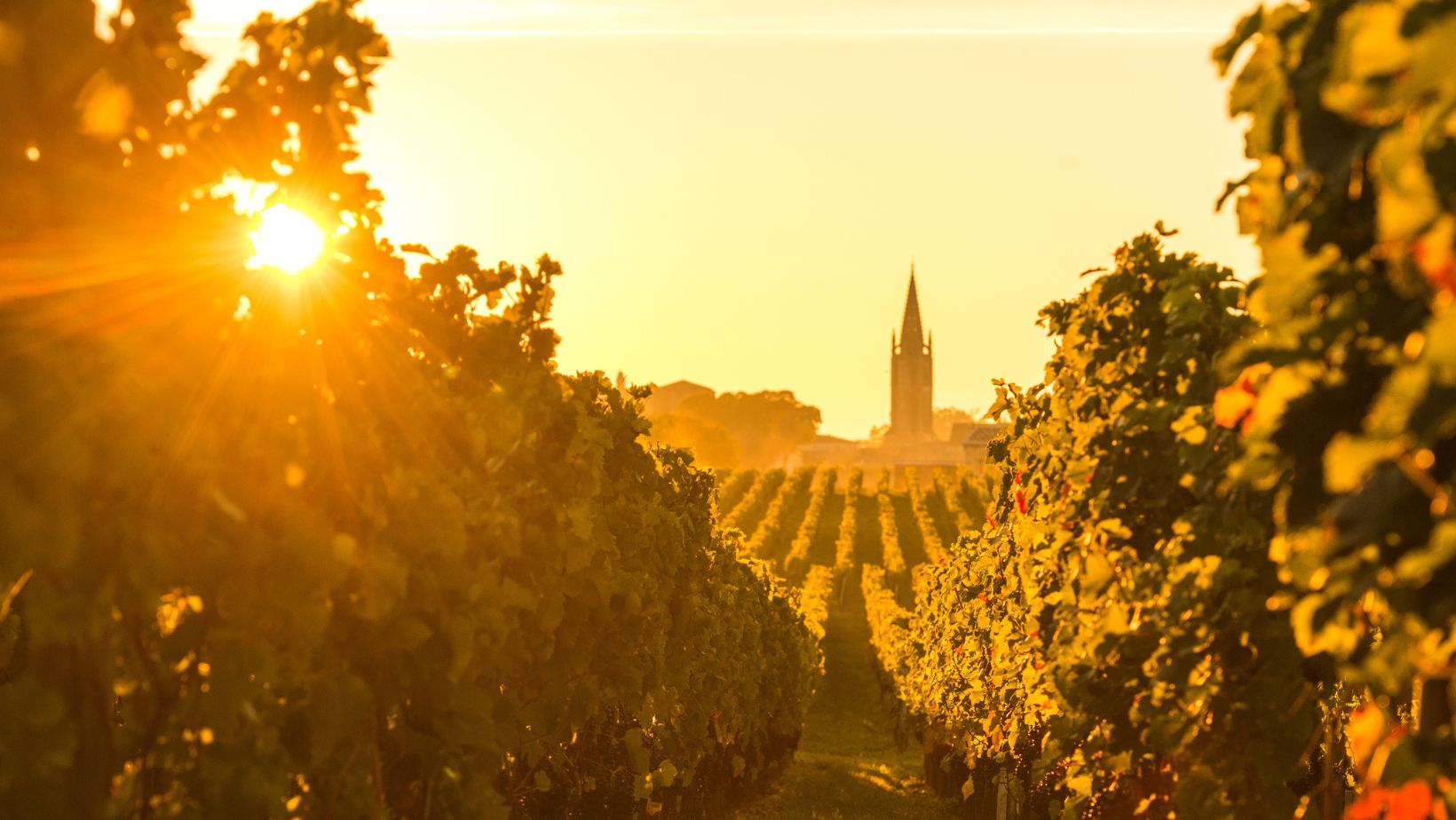
There are a limited number of grape varieties found in Bordeaux wines, commonly called Bordeaux in general terms. The names of several appellations allow us to identify more precisely the terroirs of this vast vineyard. Thus, we distinguish six wine-growing sub-regions:
- In the city of Libourne and its surroundings, the Libournais region including Lussac near Saint-Emilion where Château La Rose Perrière is located;
- The Médoc and its most prestigious wines, notably with the Margaux and Pauillac AOC appellations.
- The Blayais
- The Graves and the Sauternais.
- The Entre-deux-mers
- Bordeaux and Bordeaux Supérieur
Distinctions between grape varieties
Each grape variety has its own morphological and taste characteristics that distinguish it from the others. These differences between certain vine varieties may seem subtle to the untrained eye, but the shape of the leaves, the shape of the bunches, the color and size of the berries, the aromas and compositions are all specific and distinctive characteristics. This is all the more important when you consider that there are no fewer than 6,000 different grape varieties in the world, and almost 200 in French vineyards. Over the centuries, these grape varieties have been the subject of studies that have enabled people to refine their knowledge and adapt them to different terroirs. Since then, winegrowers have worked tirelessly to preserve them and develop their potential. Bordeaux grape varieties have made the reputation of the Bordeaux vineyards, but they have also spread throughout the world, particularly in the New World, where they have acclimatized and prospered.
To cope with the vagaries of the region's oceanic climate, and to adapt their production to the diversity of Bordeaux's terroirs, winegrowers have cultivated and blended several grape varieties with complementary qualities, whose specific aromas combine to create unique wines. These blends are designed to bring out the best in each of the grape varieties used. This blending process makes Bordeaux wines probably the most elaborate in comparison with single-varietal wines.
In the Bordeaux region, for example, there are six main grape varieties - three red and three white - used to make essentially blended wines. "Auxiliary" grape varieties are used in small quantities to enrich the typicity of the wine, and are distinct for white and red wines, and complement each other in the blending process. The choice of grape varieties blended, the winemaker's know-how and the specific characteristics of the terroir all contribute to the distinctive character of the Bordeaux wine produced.
Red wine grape varieties
Six grape varieties are authorized for blending red Bordeaux wines:
Merlot
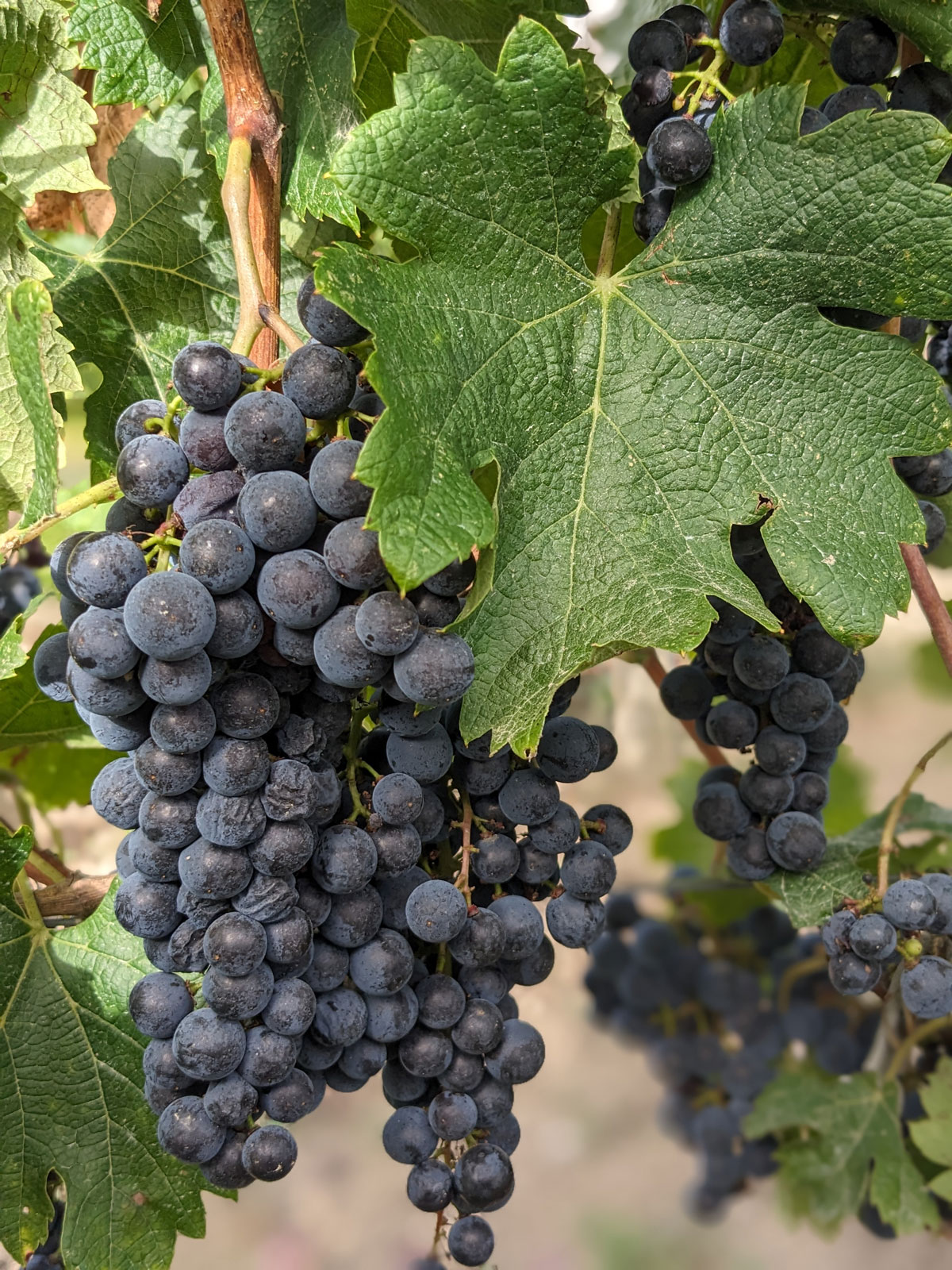
This is the grape variety associated with Bordeaux's reputation, as it is the most widely grown, accounting for 60% of the planted area. This iconic grape is the blending partner of Cabernet Sauvignon and Cabernet Franc, as demonstrated by our first wine, Château La Rose Perrière. Particularly productive and early ripening, it has been widely exported around the world, from California to Australia and Italy. This makes it one of the world's most popular "international" grape varieties. In the Bordeaux region, it flourishes magnificently on the terroirs of Bordeaux's right bank, more specifically in the Saint-Emilion region, where it thrives on cool, clayey soils, but it has also spread to the left bank in the Graves and Médoc regions.
This grape variety has medium-sized bunches and round berries that ripen and are picked much earlier than other varieties. Merlot vines can be recognized by their tassels, which often protrude quite low from the trunk. The vines can be planted very close together, from 3,500 to 10,000 vines per hectare.
Merlot brings suppleness and aroma to Bordeaux wines. Indeed, it is known for producing a wide range of aromas, mainly of red fruit.
Cabernet Franc
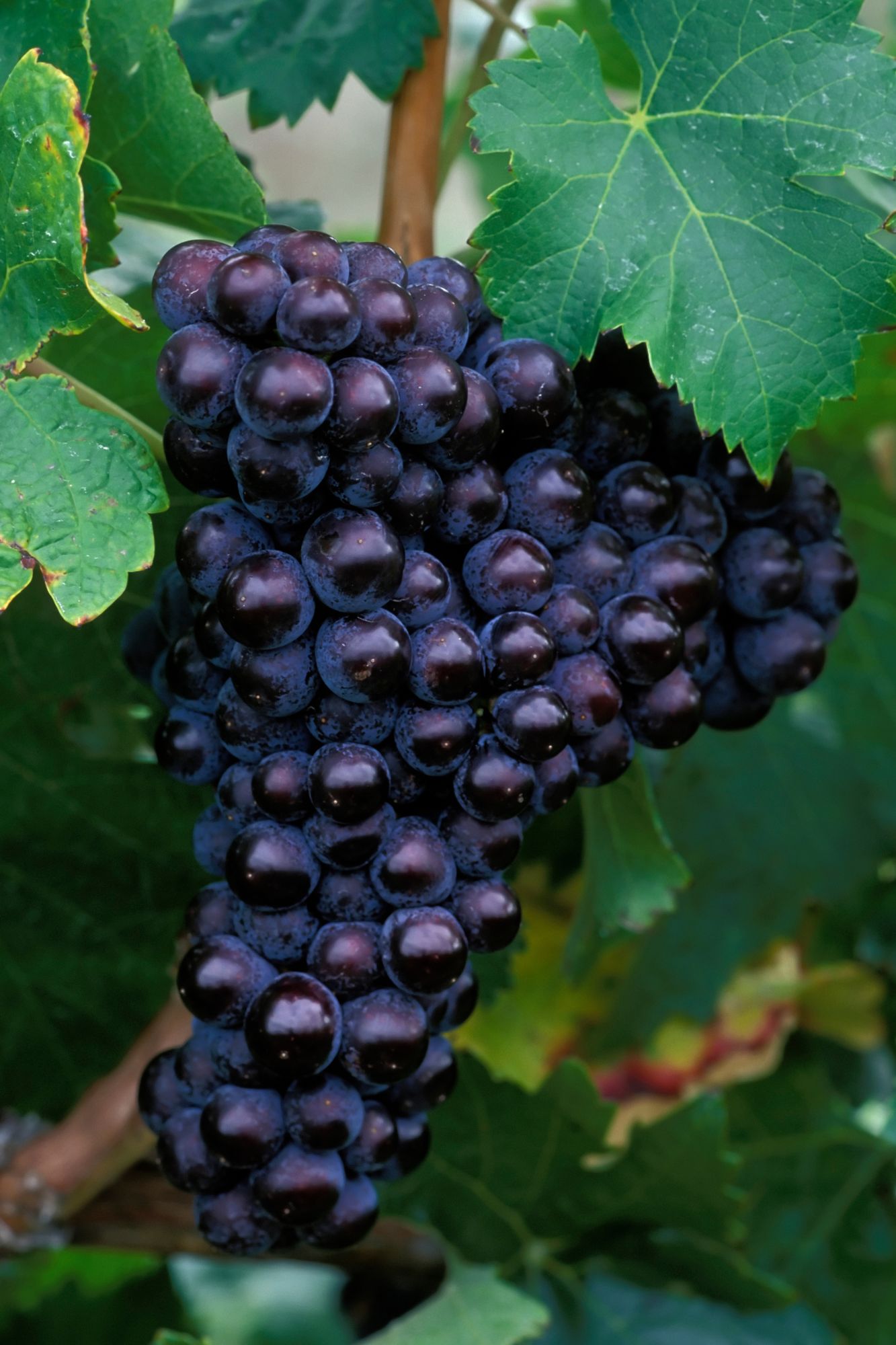 ©Canva
©Canva
Cabernet Franc is one of the oldest grape varieties grown in the world. In France, it is a major red grape variety of the Loire Valley and the South-West, of the Bordeaux vineyards in particular. This grape variety, also known by a multitude of names by winemakers, such as "bidure" in Bordeaux and "bouchet" in Saint-Emilion, is gaining popularity as a single-varietal wine but, as in Bordeaux, it is in as an assembly partner it is virtually unrivaled. Indeed, it brings depth and complexity when blended with other red grape varieties, notably Merlot, Cabernet Sauvignon and Petit Verdot whose complementary qualities are chosen by wine estates to create long-lasting red wines, all in finesse and elegance.
This variety produces medium clusters with small berries. They are distinguished by their thin black skin, tinged with blue.
Well known for its varietal aroma of raspberry, Cabernet Franc also has a refreshing touch of crushed blackcurrant leaf as well as other aromas such as strawberry, redcurrant and licorice violet. Poor in tannins, Cabernet Franc stands out from Cabernet Sauvignon by its precocity, its aromatic finesse and its less colorful color.
Cabernet Sauvignon
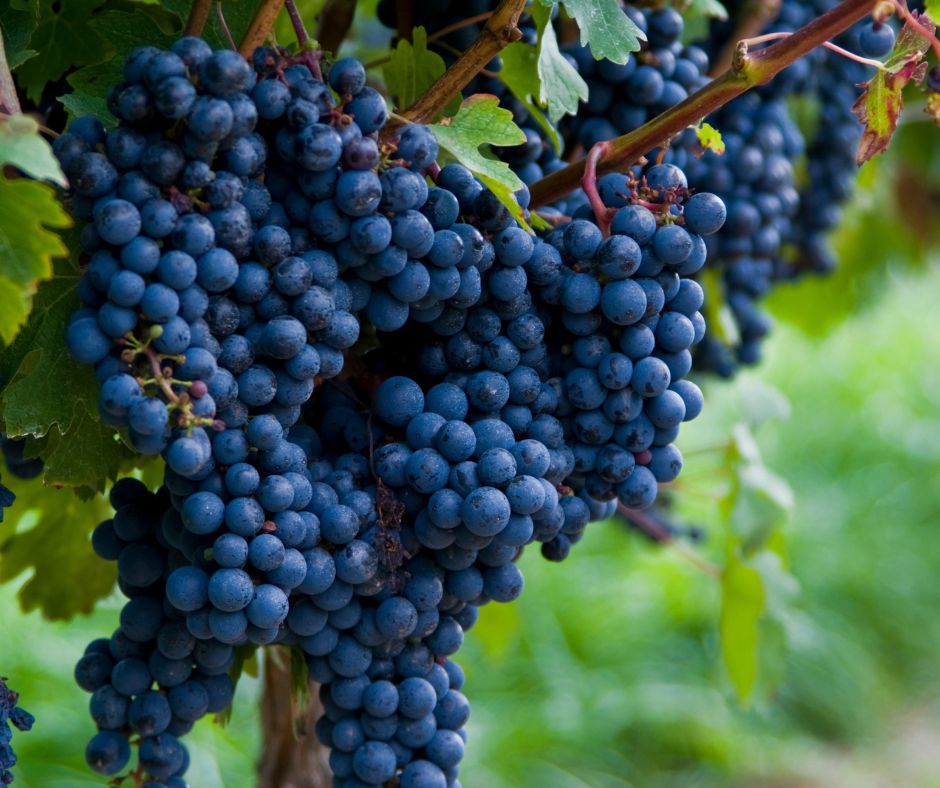
Cabernet Sauvignon is a black grape variety that produces exclusively red wines. This grape variety is widely planted throughout the world due to its adaptability to a wide variety of climates. For a long time, its origins were the subject of many myths and interpretations, as they remained an enigma. It wasn't until the late 1990s that the true origins of the grape variety were discovered thanks to DNA analyses carried out in California: the grape variety is the fruit of the union of a black grape variety, Cabernet Franc, and a white grape variety, Sauvignon Blanc. The cross-breeding is said to have been carried out randomly by winegrowers in the Bordeaux region in the 17th century.
Cabernet Sauvignon expresses itself to the full in its preferred terroirs, namely in the Médoc region, where it comes into play in a blend with Merlot, or in the Graves terroirs. It is also present in the Pomerol and Saint-Emilion wine regions. Today, it accounts for more than half of all Bordeaux vineyards. This variety produces medium-sized bunches that are longer than they are wide. The berries are round, medium-sized to small and rather tightly packed. They have a blackish-blue hue with whitish highlights, a thick, hard skin and are covered with bloom.
Mainly used in blends, Cabernet Sauvignon produces structured, tannic wines of great aromatic complexity, renowned for their persistence on the palate and excellent ageing potential.
Carmenère
Carmenère is a late-ripening black grape variety from Bordeaux. The result of a cross between gros Cabernet and Cabernet Franc, it is very little cultivated in France, with only around 20 hectares produced, although it was one of the most widely grown grape varieties in the Médoc and Graves before the phylloxera crisis at the end of the 19th century. Replaced by Merlot by the winegrowers of the time, Carmenère vines were transported from France to Chile in the 1850s. From then until 1994, Chilean wines made from these vines were referred to as Merlot. It was only when a professor from the French School of Œnology in Montpellier visited Chile and tasted these wines that he discovered that they were not Merlot. DNA tests later proved that Chile did indeed have a mixture of Merlot and Carménère vines, which have thrived there ever since. Today, the country produces over 80% of Carmenère wine.
In the Bordeaux region, this grape variety is now part of the Graves-de-Vayres, Margaux, Pauillac, Saint-Émilion and Crémant de Bordeaux appellations (sparkling wine). It produces small to medium-sized, cylindro-conical bunches, with medium-sized, spherical berries, bluish-black skin and abundant, but not persistent, bloom.
This grape variety stands out for its fruity aromas (strawberry, plum, raspberry), sometimes even spicy and slightly bitter. It produces a colorful wine with purplish highlights and considerable tannic strength.
In the Graves region, it is also known as Carmenelle, Cabernelle, Carbouet or Grande vidure. Abandoned in its historical territory two centuries ago in favor of Merlot and Cabernet Sauvignon, Carmenère has become one of the leading grape varieties in a number of foreign wine-producing countries, such as Italy and Chile. Now, thanks to global warming, there is talk of replanting Carmenère to replace Merlot, which is now over-represented in the Bordeaux vineyard.
Petit Verdot
Petit Verdot is a typically late-ripening Médoc grape variety that brings structure to the wine thanks to its high tannin content, intense color and powerful violet aroma. This variety produces small, loosely-packed bunches of small, uniform berries with a dark purple skin, bringing color and richness to blends of Cabernet Sauvignon, Cabernet Franc and Merlot.
Like Carmenère, global warming is beneficial for Petit Verdot, and winegrowers are looking forward to its return to favor.
It is found internationally in California's Napa Valley, Israel, Australia, Chile, Spain and Italy (Tuscany).
Malbec
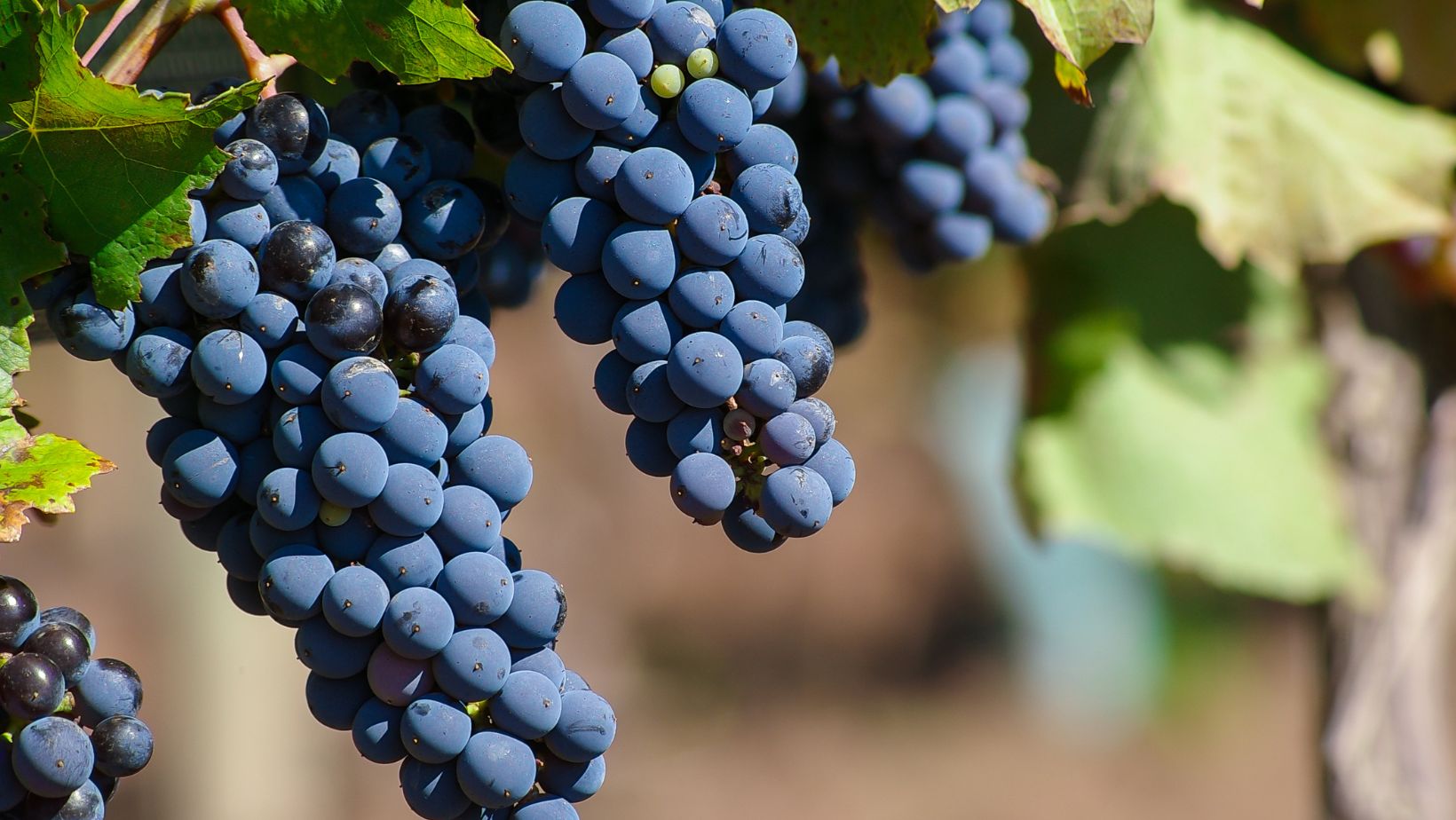 ©Canva
©Canva
Originally from the South-West, in Quercy to be precise, where it is known as "auxerrois", Malbec is a black grape variety with very broad leaves and medium-sized but compact bunches. They are generally pyramid-shaped. It ripens late and is fairly vigorous, but remains sensitive to winter frosts. It's important to harvest it ripe when its thin-skinned berries turn a dark plum color. Clay-limestone, limestone and clay-gravel soils are particularly favorable, as is dry heat. In Bordeaux, it is most often used in blends, whereas in Argentina's Mendoza region, it is used as a stand-alone grape variety. It produces well-colored, perfumed wines (dried fruits, black fruits and violets, licorice, spices) that are tannic and have good aging potential.
White wine grape varieties
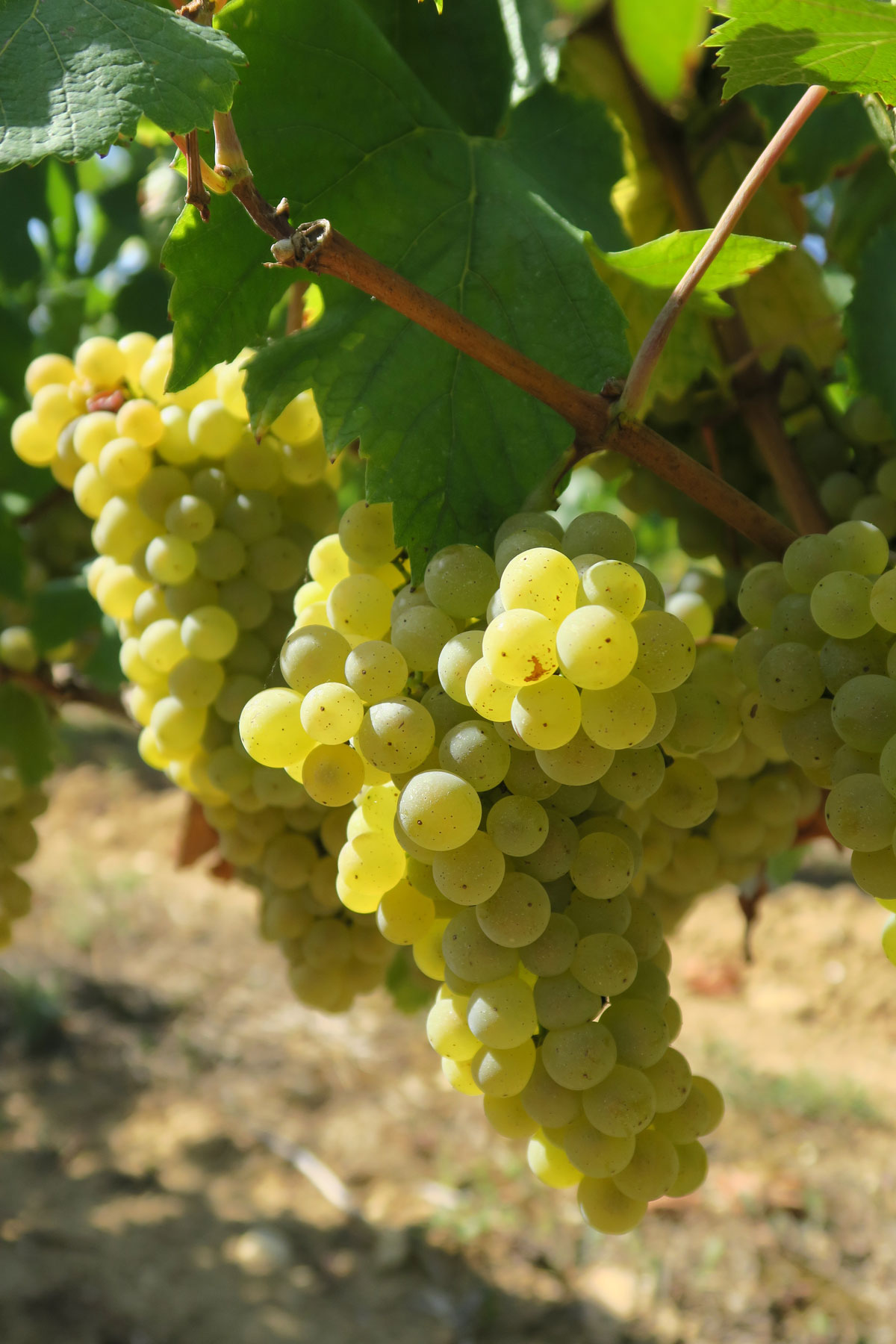
Whether dry or sweet, Bordeaux white wines require know-how and rigor handed down from generation to generation. Although a minority today, production of Bordeaux whites exceeded that of reds until the mid-1970s. They are produced from 7 distinct grape varieties, two of which are in the majority in the vineyard.
Sémillon
The flagship grape variety of Bordeaux white wines, Sémillon is the most widely planted, accounting for 45% of the vineyards dedicated to white wines. It is used to produce both dry and sweet white wines. This variety has five-lobed, round, irregular, finely bubbled leaves. It produces bunches of round berries. It produces full-bodied, subtly aromatic wines, and complements Sauvignon Blanc perfectly, to which it adds floral touches and a certain roundness when blended. It also brings aromas of apricot and honey, and is enhanced by noble rot (overripe grapes).
Over time, other countries have adopted this grape variety. Sémillon is grown in Australia, where it has made its mark, in South Africa, California and Chile, and to a lesser extent in Brazil and Argentina.
Sauvignon blanc
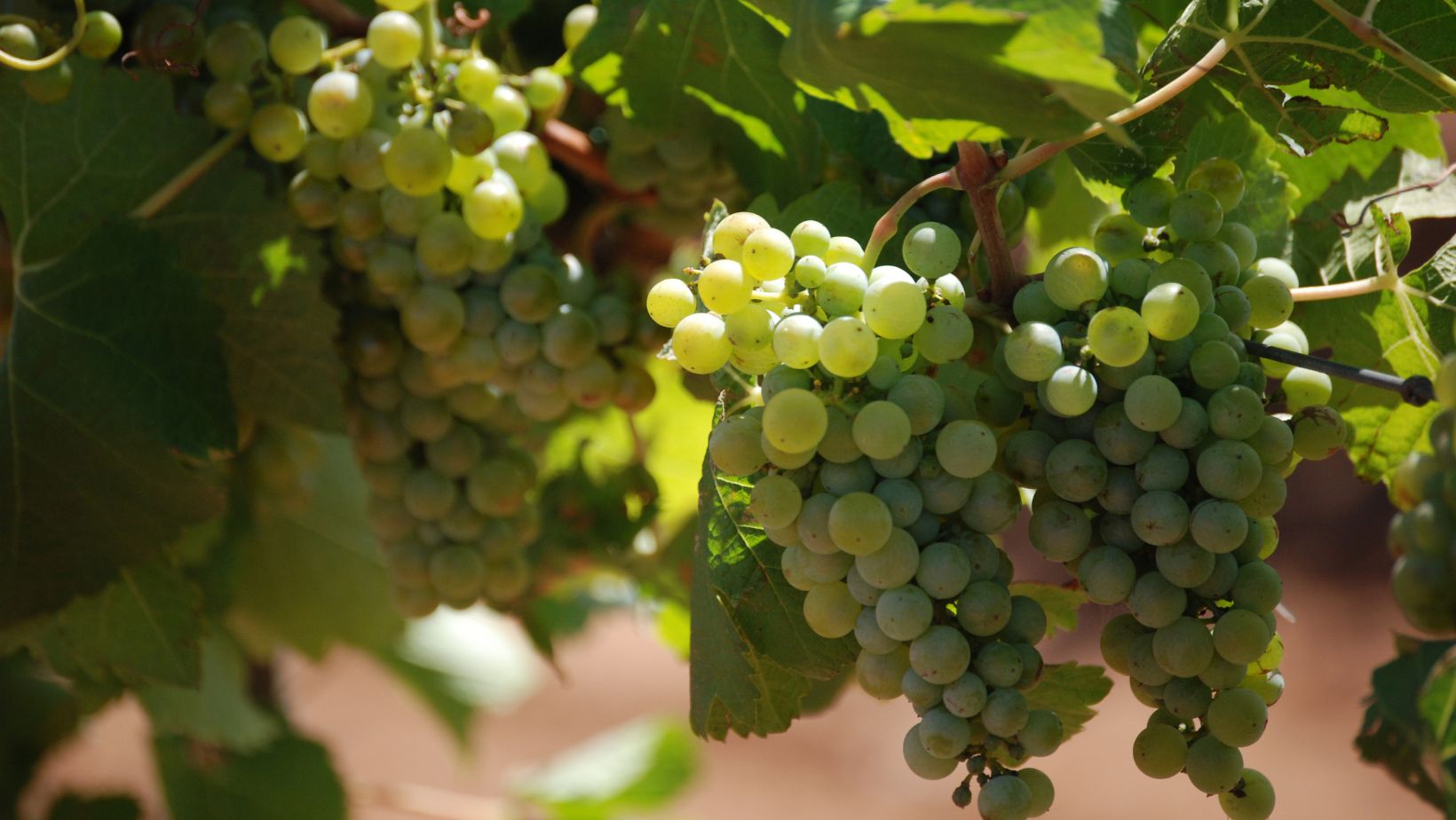
Sauvignon Blanc is the star of our blends. It is highly aromatic, round and lively. It can be recognized by its cylindrical-conical bunches, tightly packed berries and thick skin. It thrives in cool, chalky or clay soils, and those of the Bordeaux region are ideally suited to it. It also appreciates the temperate climate, mild winters and bright summers that preserve its aromatic potential. It represents 43% of the white grape varieties grown in Bordeaux.
Après ses débuts à Bordeaux et dans la vallée de la Loire, la culture du Sauvignon Blanc est devenue internationale. En effet, elle s’est répandue dans les régions viticoles internationales, en particulier dans l’hémisphère Sud, en Nouvelle Zélande, en Australie et en Afrique du Sud.
Muscadelle
Muscadelle is another grape variety that is used to blend both dry and sweet wines, and is rarely vinified on its own. Muscadelle accounts for 5% of Bordeaux's white grape varieties, due to the difficulty of planting it, as it is particularly fragile and susceptible to disease (oidium in particular) and parasites. It therefore requires a great deal of attention on the part of the winegrower, especially as it often ripens early.
It is mainly used to produce dry white wines in blends with Sémillon and Sauvignon blanc. It can be recognized by its three-lobed leaves, long, truncated-conical bunches and medium-sized, spherical berries, white in color with a pinkish-gray tendency. When fully ripe, the berries are speckled. It produces highly aromatic wines with intense floral notes, low acidity, roundness and power.
Le Colombard
Originally from the Charentes region, Colombard is a cross between Chenin Blanc and Gouais Blanc. It thrives in temperate oceanic climates. It produces hard wood that makes pruning difficult. It is fertile, very vigorous and productive. It thrives in limestone and clay-limestone soils. Colombard is used to produce sweet wines. It contributes notes of lime, nectarine and peach. Sometimes a touch of grapefruit completes its aromatic palette.
This grape variety has been exported to South Africa and California.
Merlot Blanc
Merlot Blanc or Merlau Blanc is a fertile, productive grape variety found mainly in the Blayais and Graves regions. It can be recognized by its five-lobed, sharply dissected leaves. Its bunches are medium to large and its berries are tightly packed and juicy, turning green to golden yellow when fully ripe. It produces low-alcohol wines and is used to blend still dry wines (Bordeaux Blanc, Graves de Vayres, etc.), sweet wines (Crémant de Bordeaux) and sweet wines (Bordeaux Supérieur Blanc). Originally from Bordeaux, it has been adopted by many other regions in France: Languedoc-Roussillon, Provence, Rhône and Loire regions, Cognac, Armagnac...
Sauvignon gris
Sauvignon Gris is a gray mutation of Sauvignon Blanc used both as a main grape variety and as an auxiliary. It can be recognized by its generally small berries, which are gray or slightly pink in color when ripe. It is recognized as less productive than Sauvignon, but offers very high sugar-accumulation potential and lower acidity than Sauvignon. It produces very powerful, full-bodied wines, with aromas of boxwood, flowers, muscat and grapefruit.
It is also found in other French regions, including Provence, Burgundy, Jura, Languedoc-Roussillon, Loire, Beaujolais and Rhône. Internationally, it has won over winemakers in Germany, Bulgaria and Chile.
Ugni blanc
Originally from southern Italy, and more precisely Campania, Ugni blanc was planted throughout Italy and then in Provence in the 14th century, before reaching the ocean coast, according to the first written records dating from 1730 in Cadillac. This productive, vigorous grape has elongated, narrow bunches and small, round, golden berries that are juicy and acidic. It produces acidic wines with moderate to low alcohol content. Its aromatic palette is mainly fruity, with citrus notes such as lemon and quince. It also goes by other names you may know: Malvoisie, Clairette, Queue de Renard, Roussan or Rossola.
It accounts for less than 2% of Bordeaux's vineyards, but is now the second most widely grown grape variety in France, with over 80,000 hectares (Corsica, Provence and Languedoc-Roussillon), and has been exported to Europe (Bulgaria, Portugal), Australia and South Africa.
By now, you're familiar with all the grape varieties that are permitted in the Bordeaux region, and that contribute to the reputation of our winegrowing region! The blends of these grape varieties offered by Bordeaux winemakers are all secret "recipes", some of them prestigious, designed to delight your palate. To identify the grape varietals in the wines, it is best to taste the varietals separately, and do more blending tastings as you discover the different Bordeaux appellations. You can also rely on the bottle label, but bear in mind that grape variety labelling is not compulsory under national regulations, and that only grape varieties representing more than 15% of the wine blend are indicated.
